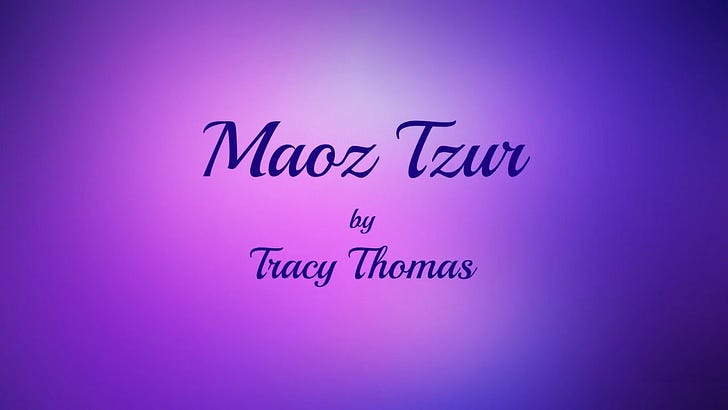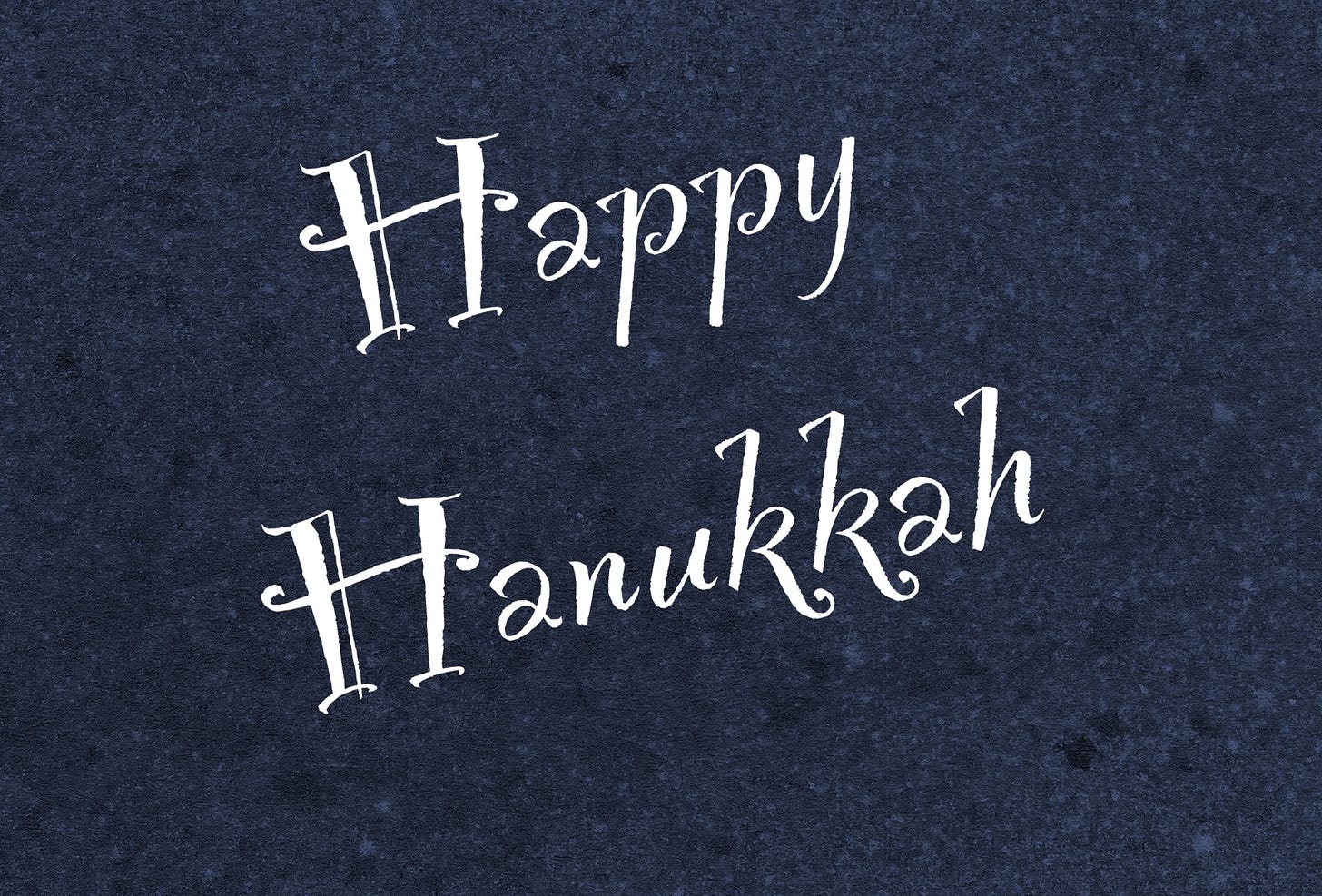Rabbi Janet Roberts enjoyed watching the lighting of the beautiful Christmas tree in Rockefeller Center and listening to the singing of the inspiring Christmas songs during the lighting event. Although our dreidel song is a fun song, it does not fall into the category of “inspiring” music.
Some of us may be familiar with the song “Ma’oz Tzur,” which is traditionally sung at Hanukkah during the candle-lighting ceremony. The usual English translation of the song’s title is “Rock of Ages” but, for those who do not know, the song has nothing in common with Christian hymn of the same name. A link is to the singing of “Ma’oz Tzur,” including the commonly sung Hebrew lyrics and English translation, is here:
The lyrics we sing today were written in the late–19th century by Marcus Jastrow. But singing while lighting the Hanukkah candles is a tradition that goes back to at least the 15th century. Music notation was not written before the 16th century, so we do not know the original melody used. But we do have the original lyrics, which come from a medieval poem (Hebrew: piyyut) dating to the 12th or 13th century (pre-dating the Christian hymn by a couple centuries).
The poem did not originally have a title, and there is no direct translation for the term Ma’oz Tzur. However, by looking at other biblical passages (Psalm 31:3; Psalm 89:27; Exodus 15:2; Deuteronomy 32:3) we find similar texts that refer to God as our “rock,” “strength,” and/or “might.” Also, the 1948 Declaration of the Establishment of the State of Israel includes the line that we place “our trust in the Rock of Israel . . .” referring to God.
The version we sing today is clearly a Hanukkah song. It celebrates the Jewish–Maccabee victory over the Greek–Seleucids, and the purification of the Temple in Jerusalem which had been defiled by the Greeks. The purification was part of the rededication of the Temple. The Hebrew word for dedication, or rededication, is “Hanukkah.”
The original version also celebrates victories over enemies but is not only about Hanukkah. There are five original stanzas, and a sixth that first appeared in the 18th century. (The complete Hebrew poem with English translation can be seen here: https://www.sefaria.org/sheets/206624?lang=bi)
Stanza 1: Thanks to God for his protection from enemies (who are dehumanized when referred to as the “barking foe”).
Stanza 2: Describes God liberating the Jews from bondage to Egypt.
Stanza 3: Describes God saving the Jews after the Babylonian Exile, and bringing the Jews back home.
Stanza 4: Describes the Purim story, according to the book of Esther, with the bloody end of Haman and his sons.
Stanza 5: Describes the Hasmonean (Maccabee) revolt against the Greeks.
The sixth stanza is written as a current plea:
Unsheathe Your holy arm
And bring near the end that is salvation.
Claim the vengeance of your servants’ blood from the evil nation.
For the hour has lengthened on us,
And there is no end to the days of evil.
Push back the red one, in the shadow of the Tsalmon,
And raise for us the seven shepherd.
Although versions of this final stanza do not appear before the 18th century, some scholars and Rabbi Roberts believe it is likely that the stanza was known, but its printing was suppressed. This is a plea by the Jewish people: “Hey, God! Remember those other times when you saved us? We need some help again now!” In the 12th/13th centuries, the Jews were victims of the Crusades. (The reference to “the red one” could be a reference to Frederick Barbarossa (“Red Beard”), the 12th century Holy Roman Emperor and leader of the 3rd Crusades.)
The version of Ma’oz Tzur we are likely to hear today removed a lot of the passages about vengeance, making it more palatable to the wider public. Jews were a decided minority people and were not going to mount an insurrection. The earlier generations of Jewish people have not left us cathedrals (like Notre Dame Cathedral, built 12th–14th century), but we have a poetic and musical tradition that is worth celebrating and holding on to. The Jewish people are still here today, and we can be a light in the darkness. Every one of us is a tiny flicker. Together we are a mighty flame!
This blog is Tara Keiter’s interpretation of the Temple Israel of Northern Westchester Torah Study session. Misquotes or misunderstandings in what Rabbi Roberts taught are the responsibility of Tara Keiter.



